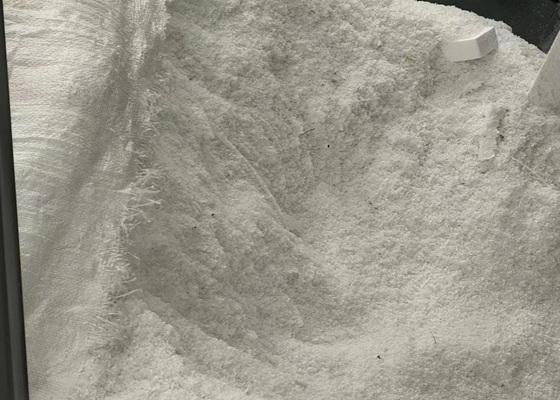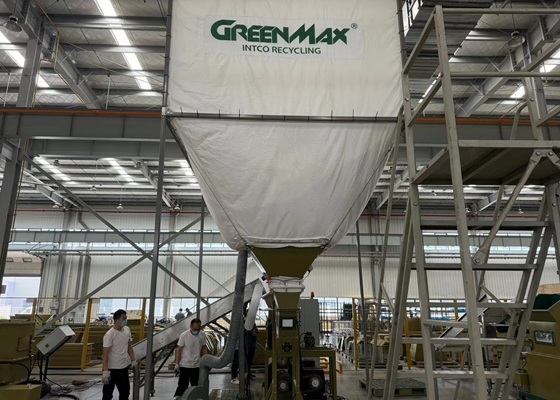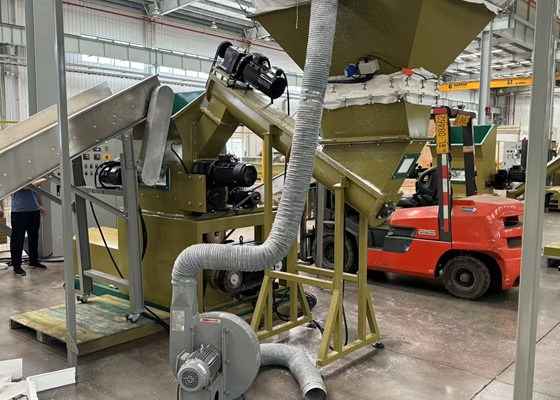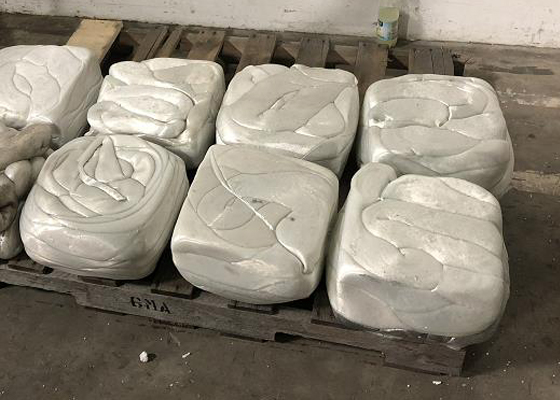Efficient Foam Powder Recycling: Styrofoam Densifier Delivers Both Environmental and Economic Benefits
EPS foam is widely used across various industries due to its superior properties. However, in practical applications, many foam materials must be cut to specific sizes to meet the needs of different sectors. For example, in the packaging industry, Styrofoam is precisely cut to protect fragile products, ensuring proper fit and optimized cushioning.
In addition to larger foam scraps, the cutting process also generates a significant amount of fine EPS powder. When using CNC hot wire cutting or engraving, foam scraps and powder particles are often left behind. If these foam scraps and powder waste are not effectively managed through foam recycling, they can occupy valuable space, create an unfavorable work environment, and increase waste disposal costs for businesses.

Unlike large pieces of foam waste, fine EPS powder is easy to float and difficult to clean, which not only affects the workshop environment, but may also endanger the health of workers. Styrofoam recycling is more difficult than ordinary EPS foam, so many foam cutters are reluctant to deal with these powder fragments separately.
In contrast, although large pieces of foam waste are bulky, they are easy to collect and can be efficiently recycled by compression and volume reduction. EPS powder is difficult to collect in a centralized manner and cannot be recycled using traditional cold-press compactor, making its treatment more complicated.
In order to help foam cutters establish an internal foam recycling system, improve the resource utilization rate of EPS powder and scraps, and reduce storage occupancy, GREENMAX has specially developed Styrofoam densifier.
Because EPS powder is granular, traditional cold-press compactors rely on physical mechanical extrusion for volume reduction, which is difficult to compress directly, and the powder is easy to float and the compression efficiency is low. The foam densifier uses hot melt technology to melt the foam by heating, turning it into a molten state, and then extruding it into high-density ingots to achieve more efficient recycling.

Therefore, GREENMAX Styrofoam densifier can efficiently process powdered foam waste, melt the powder at high temperature and reshape it, which not only avoids dust pollution, but also greatly improves the efficiency of foam recycling.
Because foam powder is difficult to transport to the equipment through a conveyor belt, GREENMAX has specially added fans and pipes to the equipment and directly connected it to the silo to make the recycling of powder more convenient.
This design allows the factory to store EPS powder directly in the silo. When the powder in the silo is full, it can be transported to the compression bin of the equipment, which effectively solves the problem that the powder is difficult to physically compact and transport.
In addition, the Styrofoam densifier is also equipped with a conveyor belt and Styrofoam shredder, which can normally handle block EPS foam. Block foam enters the Styrofoam shredder through the conveyor belt, is broken into uniform fragments and then transported to the compression bin. EPS powder enters the silo directly through the fan and pipe, and is then transported to the crushing bin and compression bin by the silo to achieve efficient processing.
The advantage of this Styrofoam recycling solution is that even if there are larger foam blocks in the powder, they can be evenly broken up when entering the equipment, ensuring that they are finally compressed into high-density ingots, thereby improving the overall recycling efficiency.

By combining two processing methods, Styrofoam densifier can recycle both EPS powder and block waste at the same time, providing foam cutters with the best foam recycling solution. In addition, in order to prevent the bridging of powder in the silo, the equipment is equipped with a stirring rod to ensure that the EPS powder can enter the compression bin smoothly and continuously, improving the processing efficiency.
The compressed foam blocks can be sold directly to downstream recyclers for quick cash realization and direct benefits. At the same time, foam cutters can also choose to establish a complete Styrofoam recycling solution system, by installing a granulator to convert waste into recycled granules, which can be reused in foam production to achieve resource recycling.
Although foam powder may seem insignificant, its recycling value is the same as that of ordinary EPS. With the right foam recycling solution, foam cutters can not only effectively reduce waste, but also create additional profits, promote sustainable development, and maximize the use of resources. Join us to learn more about recycling!

